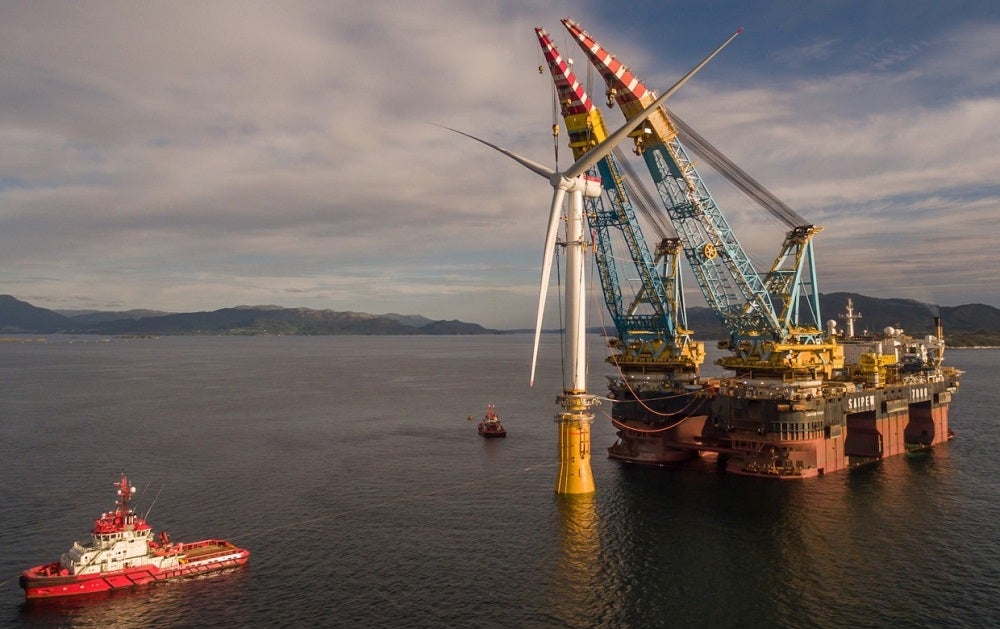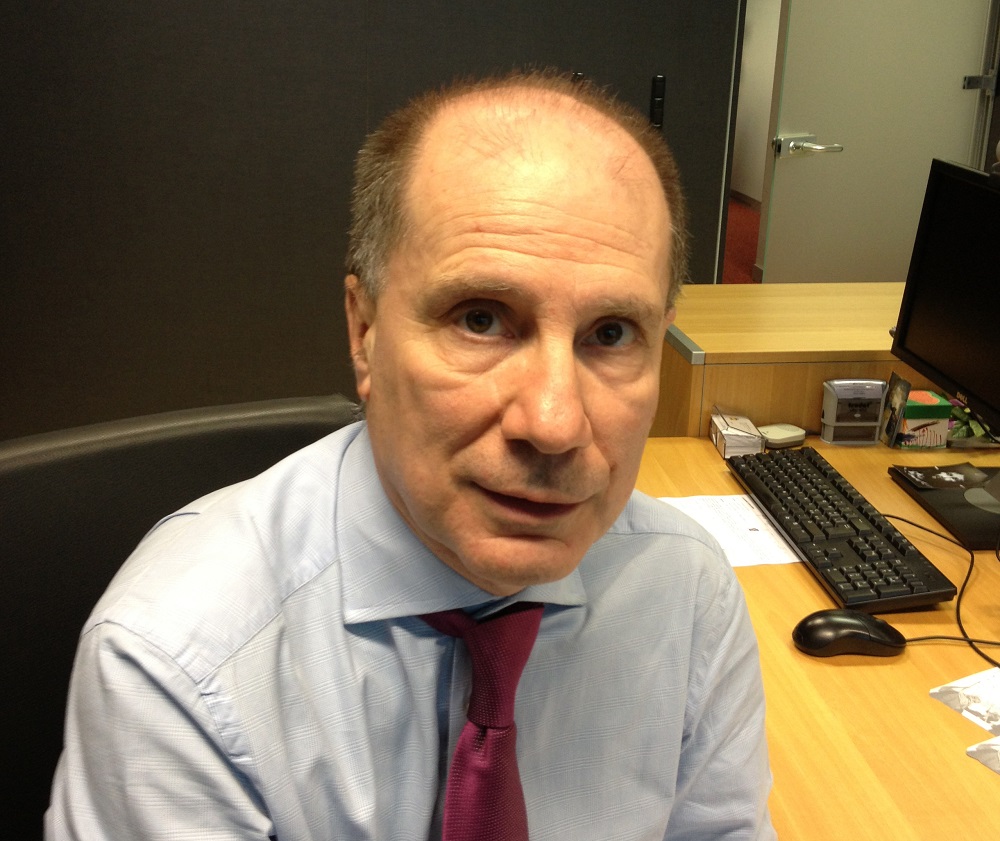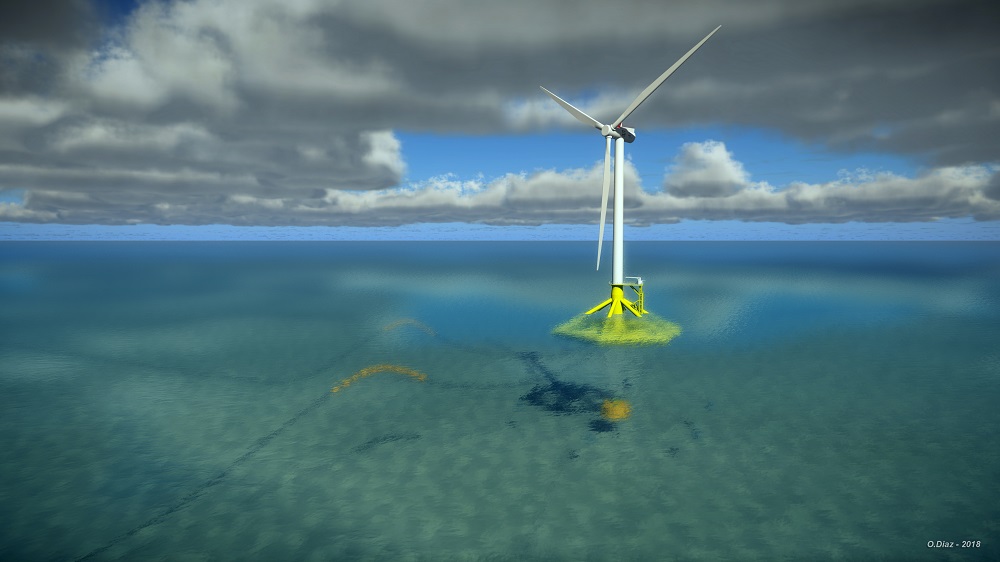
The low-carbon transition continues to gather momentum, and for many established companies connected to the energy industry, that means a change in approach to how they do business and plan for the future. In this Q&A, Mario Marchionna, corporate head of technology innovation at Italy’s Saipem, discusses how his company – one historically focused on oilfield services – is adapting to the transition, and the opportunities that lie ahead.
Saipem’s ties to the oil and gas industry stretch back more than 60 years, in which time it has been one of the world’s top suppliers of oilfield services and expertise, with close historical links to Italian oil major Eni.
But the global energy system is changing quickly, as net-zero targets are adopted to reduce carbon emissions and limit global warming. While oil and gas products are still expected to play a role in the energy mix for years to come, there is nevertheless a shifting emphasis towards clean energy over fossil fuels.
For Saipem, which has spent years specialising in large, complex engineering projects across the oil and gas sector, this energy transition has accelerated changes to its core business focus, as it contemplates new ways to use its expertise in a low-carbon world.
Offshore and floating wind has been a clear choice, where the technical skills, logistical experience and accumulated knowledge of sea-based projects have obvious transferrable qualities with offshore drilling services.
Indeed, Saipem has recently secured a number of contracts to supply services to major offshore wind ventures, including the UK’s Dogger Bank wind farm and Seagreen project among others.
Q&A: Mario Marchionna on how Saipem is navigating the energy transition and the opportunities that lie ahead
How and why has the low-carbon energy transition changed the way Saipem looks at its core business?
The low-carbon energy transition will be the defining economic, political and social shift of the twenty-first century.
Saipem is committed to playing its part in this transition and is already acting as a global solutions provider to the energy industry, providing concrete innovative tools to our clients to solve complex problems, especially such as those presented by the energy transition.
It is a real process of change, with many actors of the energy sector accelerating on the transition while at the same time reducing the weight of their traditional business.
In this respect, technological innovation, one of Saipem’s strategic pillars, is a key lever to drive the company more quickly towards novel and fully-decarbonised energies – selective technology access is key to allowing the company to offer the most competitive solutions.
What aspects of Saipem’s experience with oilfield services have been advantageous/transferable to offshore wind?
Offshore wind and floating renewable solutions (both wind and solar) are an extension of our “art” from the oil and gas business.
We always knew that our vessels could be useful also for installing huge wind farms and, actually, we filed a few patent applications in the first decade of the new millennium – so it was very natural to shift from one field to the other.
This is well recognised both from recent commercial achievements and from the development of new solutions (i.e. the floating “Hexaflaot” foundation or solar floating parks).
Our expertise, and infrastructure, in other areas has also been repurposed for the energy transition. Saipem 7000, a ship that was used to help construct oil rigs in decades past, now plays a central role in the installation of wind turbines across Europe.
What have been the biggest challenges of entering new markets?
A key challenge in our industry when entering a new market is to develop (or selectively access) innovative technologies that can provide distinctive solutions tackling climate change and quickly adapt to the ever-changing needs in the sector.
Co-operation is also fundamental. As an example, a floating solar panel park for coastal applications has been developed by Saipem’s affiliate company Moss Maritime. In this respect, Saipem and Equinor have recently signed a co-operation agreement, consisting of three phases, to develop a floating solar panel park solution for coastal applications.

However, this is not sufficient, and different organisational changes have occurred in our divisional structure in order to better catch opportunities in the “Energy Transition” business.
The Onshore division created the “New Energies” business line, while the Offshore division created a new business line named “Renewables”.
Moreover, in 2017 we launched our fifth new division, named XSIGHT, dedicated to high added value engineering services. One of the main objectives is early engagement to strengthen activities in the decarbonisation business, i.e. renewables, biofuel/biomass, circular economy and CO2 management.
As a mixture of all these ingredients, and despite the current challenging circumstances, Saipem has been able to enter new markets including renewable and hydrogen projects.
A few commercial projects have been initiated by adopting both these technologies: Saipem will co-develop in the Adriatic Sea off the coast of Ravenna the AGNES (Adriatic Green Network of Energy Sources) project, characterised by offshore and nearshore wind farms, floating solar panels at sea, energy storage systems and hydrogen production from renewable sources.
Other projects are under elaboration, such as a floating offshore wind farm located in the Saudi Arabian coast of the Red Sea, together with Plambeck Emirates.
Which technologies/innovations are you most excited about that will define the future of offshore wind?
Floating offshore wind is becoming an increasingly important new renewable energy sector, and it will enter full-scale development in the second half of this decade.
Floating offshore wind gives us the possibility to increase the generation of renewable energy in mature markets, like Northern Europe, as well as in new areas where until now the environmental conditions did not allow the development of wind energy.
This is the case with the US west coast, Canada, the South Mediterranean Sea, Africa, etc.
Further advantages offered by such technology, mainly due to the long distance from the coast, are that they have less impact on fishing and tourism. Using the proper design for the mooring arrangement also means less impact on the environment, compared with the fixed-bottom wind farms.
Integration with other technologies such as the new generation of electrolysers can offer the advantage of producing green hydrogen directly offshore, solving the issues facing some countries in the utilisation of a massive quantity of renewable energy due to the limitation of the onshore electric infrastructure.
We have made strategic investments in technology for floating wind. As I have previously mentioned, we have developed a lighter floating offshore wind substructure called Hexafloat, which should be ready for demonstration off the Irish coast in 2022.

The project aims to develop a cost-effective and innovative solution for the renewable energy market and will enable large wind power generators to be deployed into deep water from the coastline.
We are also evaluating the construction of demonstrators in other strategic areas in order to validate the technology under different environmental conditions, and recently Saipem started the construction of a scale demonstrator in the Mediterranean Sea with the Italian National Research Council (CNR).
Any broad predictions for the next ten years of energy? – what will be the biggest changes to the industry?
I expect that in this decade, the energy industry will increasingly focus on sustainability and it will become the steer for better corporate practices as climate change becomes an ever more pressing issue.
We are taking steps to increase the efficiency and sustainability of our existing operations within the oil and gas sector, by the exploitation of natural gas and by managing the overall CO2 value chain.
In general, Saipem is pursuing several diversified actions with a strategy reflecting four main pillars – along with natural gas, which will continue to play a relevant role in the energy transition, especially in the short to mid-term. These pillars are:
- Renewables: Offshore renewable energies are particularly relevant for us, especially offshore wind and floating solar parks. Their systemic integration is decisive also through the production of hydrogen that could act as an energy vector capable of allowing more independence of the intermittent character of most of renewables.
- Decarbonisation of carbon-intensive industries: Still producing energy by fossil fuels but significantly reducing the related climate-impacting emissions. This may impact not only the oil and gas downstream industry, but also other carbon- and energy-intensive industries like steel, cement, paper mills, or waste treatment.
- Biomass conversion and the circular economy: Embracing new models that create value and safeguard the environment by improving the management of resources, eliminating waste through better design, and maximising the circulation of products.
- Hydrogen: Has an increasingly important role as a totally-decarbonised gas that could progressively substitute natural gas, especially for all those applications that will be difficult to electrify.
The different targets are pursued through a mix of efforts with different maturity: innovation activities aimed at intercepting new and potentially disruptive technologies and related markets (scouting activities are continuously underway to identify potential partners with who Saipem can cooperate); technology-pushed business development efforts aimed at helping clients to re-design their carbon footprint; and already-structured commercial projects where the innovative approaches find full exploitation.
What are the next steps for Saipem in terms of the energy transition and its offshore wind ambitions?
Because of the growing investment in renewable energies, and mainly in offshore wind, the levelised cost of electricity (LCOE) will continue to fall, making such energy more and more competitive compared to fossil fuels.
Our objective is to continue developing innovative technologies and invest in renewable energy projects with huge potential.
We successfully installed the first floating wind farm in the world, the Hywind Scotland project for Equinor. Then, our firm won contracts for the Formosa 2 offshore wind project in Taiwan, and the Neart na Gaoithe offshore wind farm in Scotland.
Other recent acquisitions followed: the transportation and installation of two offshore high voltage direct current (HVDC) platforms for the Dogger Bank A and B wind farms, off the north-east coast of England; a contract for the installation of many foundations related to the Seagreen offshore wind farm off the east coast of Scotland; the foundations installation on Fecamp project and the transportation and installation of jacket and topside of an offshore substation at St-Brieuc offshore wind farm, both projects located in the north of France.
From 2016 to today, thanks to our diversification due to the energy transition, we have signed contracts worth more than €1.5bn related to offshore wind.
There are more renewable and green projects in the pipeline for our firm and we continue to explore many opportunities in the renewable space. We will continue to develop technologies that will lead to alternative and more sustainable solutions in several industries, from energy to infrastructure.




